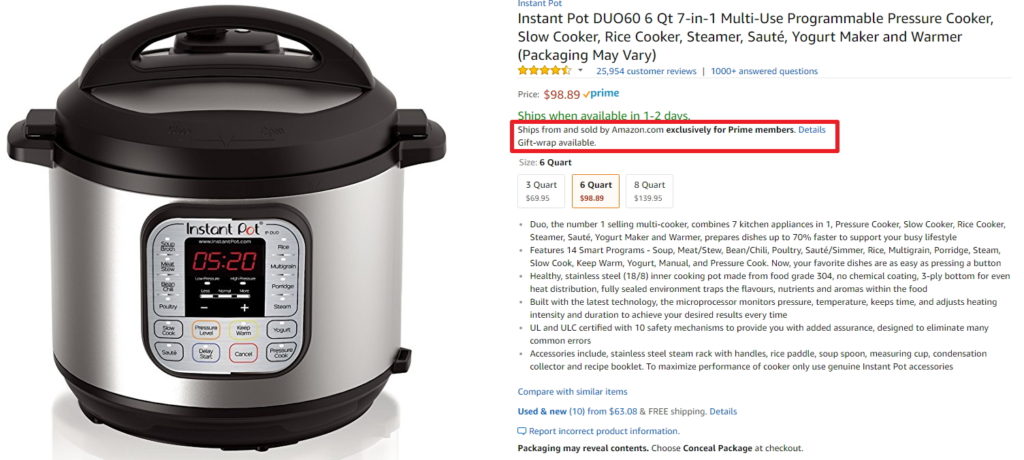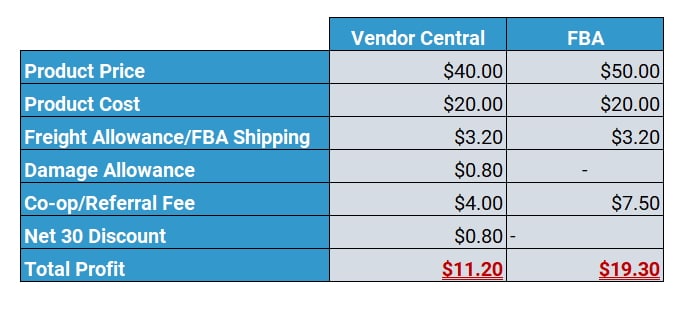What is Amazon Vendor Central and is it Right for You?
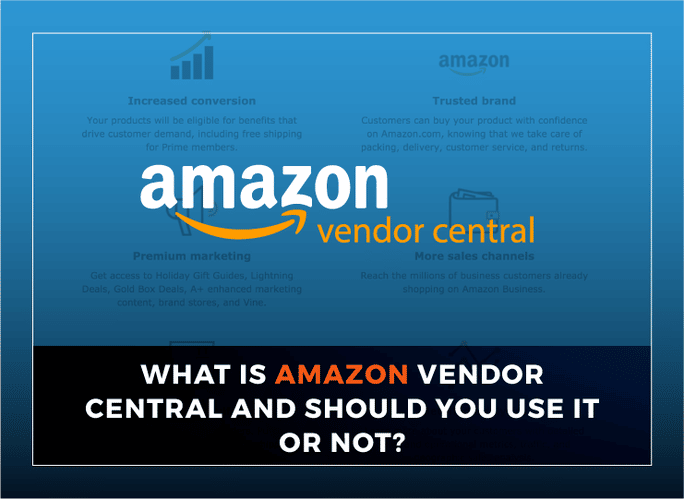
If you're an Amazon seller you're probably familiar with Amazon Seller Central. Seller Central is the platform most sellers use if they want to sell on Amazon. But aside from Seller Central there is one main other portal for sellers to sell through: Vendor Central. If you're reading this article, you may have even just received an invite to join Vendor Central. So what exactly is Vendor Central, what are the pros and cons to it, and should you being using it for your business?
In this article we'll take a look at the Vendor Central platform and also go over who should and should not be using these platforms. If you've received a Vendor Central invitation I highly recommend you to read this entire article as joining Vendor Central could affect your Amazon business very significantly.
Related Article: Amazon Set to Terminate Many Vendor Central Accounts in 2024
What is Vendor Central?
When you sell through Seller Central your selling on Amazon. When you sell through Vendor Central you are selling to Amazon. This is a very critical distinction. Through Vendor Central Amazon buys your goods and is the owner of these goods. With Seller Central Amazon never takes possession of your goods – they're simply warehousing them for you. When you view a listing on Amazon and it says “Ships from and sold by Amazon” this means that the brand owner of this product is almost certainly selling it to Amazon through Vendor Central. It's also worth noting at this point that Vendor Central and Vendor Express have little in common – they're completely separate platforms.
Vendor Central is an invite only program available only to brand owners. You can't be reselling someone else's products but if you're private labeling products under your own brand that is OK. If you're a brand owner, once products start accumulating hundreds of thousands of dollars in sales a year don't be surprised to see an invitation from a buyer at Amazon to come join the program.
Vendor Central operates how most big retailers like Walmart and Home Depot do. Each department (i.e. a category of products) has one or more “buyers” managing the purchasing of products for that department. Once you agree to join they will send you purchase orders and you send the product to them and they'll pay you normally 30 days after they receive the products. Many individuals and small companies who are predominantly ecommerce sellers are likely not used to the intricacies of dealing with large retailers and this lack of knowledge can very easily result in you getting burned if you're not careful. I'm going to address this later on in this article but I highly recommend you listen to our podcast on selling to retailers.
The True Costs of Vendor Central
How you get charged when selling to Amazon through Vendor Central is not as straight forward as it is with Seller Central. With Vendor Central you will be giving Amazon a discount on your products and also be charged a number of other fees and discounts. These are fairly similar pricing models across all big retailers but if you're not used to them you can quickly get burned. Selling to large retailers is a whole different ball game then being a B2C seller on Amazon, eBay, other selling platforms.
The most important thing to know is that large retailers do not make all (or most, in some cases) of their money off of buying products low and selling them high. This is probably how you operate your business – you buy widgets either locally or in China for $10 and sell them for $50. Large retailers often make their money through discounts, clawbacks, and penalties. This is where sellers considering vendor central can be screwed. Often, Amazon wants a discount in the range of 15-30% off of your normal retail pricing and then they have a bunch of fees on top of this. Take a look at some of the other charges you're likely to incur:
- Marketing co-op fee (10%+)
- Discount for paying within 30 days (2%+)
- Freight Allowance (2%+)
- Damage Allowance (2%+)
- Penalties (0%+)
These other fees are where retailers like Amazon make a lot of their money.
When you get an invitation for Vendor Central you will almost certainly be given very low teaser rates for all of the above items. In the beginning you will likely be charged around 15-20% in co-op fees, freight allowances, damage allowances, and early pay discounts. However, after about a year you will receive an email advising you that all of your fees are going up. You can negotiate these increases (I'll cover this in my tips below) but no matter what, expect the discounts you provide to be well in excess of 25% in the long run. As for penalties, Amazon is not as aggressive as some other retailers when it comes to these but they definitely will penalize you for confirming POs late and/or shipping them late along with other infractions. It’s not unreasonable to assume another 1% in penalties.
At this point you may be starting to see that Vendor Central will significantly decrease your margins. Let's dig deeper though. Pretend the co-op fees, freight allowances, etc. are more or less a wash with the referral fees from Seller Central (normally around 15%) and FBA fees for shipping your products (you might pay considerably less in freight allowances with Vendor Central than you would with FBA shipping fees but once your teaser rate expires I assure you that they will more or less be equal). The problem is that you then also need to give Amazon a discount on your products and this is where you will get murdered. Let's considere a hypothetical product that costs $20 and that normally sells for $50.
There is over a 70% difference in profits. You may argue that FBA Shipping fees will be higher than Vendor Central freight allowances and that some damage allowance should also be allowed for FBA orders. However, even if you grant these concessions that difference in profits is still huge.
But wait! Your buyer at Vendor Central has promised you a giant increase in orders right?
Will Your Products See More Demand if You Sell to Amazon?
If and when you speak to your buyer at Amazon you will likely be promised that the number of sales your products receive will increase by ginormous amounts. Well guess what? Probably not. I can tell you from personal experience along with speaking to other Vendor Central clients that becoming a Vendor Central customer does not significantly increase sales over FBA but let me explain in more detail why this is the case.
If your buyer at Vendor Central tells you that your sales will increase, either the implicit or explicit suggestion is that the Amazon search algorithm favors products sold by Amazon. However, the percentage of paid units sold by third party sellers (i.e. Seller Central) has been steadily growing to the point where in Q4 2017 third party sales now eclipse first party (i.e. Vendor Central) sales and this trend shows no sign of slowing down. And completely unscientifically, I have never once been given any indication from doing either Amazon searches for personal reasons or competitor research that Amazon favors one category of seller over another. And let's face it: collecting a percentage of third party seller revenue without incurring any inventory risk sounds lot nicer than a traditional retail business model.
You will get some small sales advantages to being on Vendor Central though. When you're on Vendor Central, Amazon will re-market your products occasionally both through email and off-Amazon advertising (i.e. banner ads). They will not however do any other free on-Amazon advertising such as Sponsored Ads (that you'll still have to fork over your own money for).
If you are moving from Merchant Fulfilled to Vendor Central you will see a very significant increase in your sales. You could achieve these same results from using FBA however (and with more margin) but there are reasons why not everyone can use FBA.
Other Negatives to Vendor Central
There are some positives to being a Vendor Central customer but before I get to them I will finalize with a few more of the downsides of Vendor Central:
- You hand control of your catalog over to the retail contribution team
- Huge ebbs and flows for purchase orders
- No domestic support – the same Indian support
One of the biggest downsides to being a Vendor Central customer is that you lose control over your product detail pages and hand them over to the Amazon Retail Contribution team. Any time you want to make a simple change to wording or imagery you need to make a request to do this and these changes can sometimes take weeks to occur (and they sometimes never occur). Worse, sometimes this team will also pass their own judgement on your products' descriptions and imagery and change them under their own initiative.
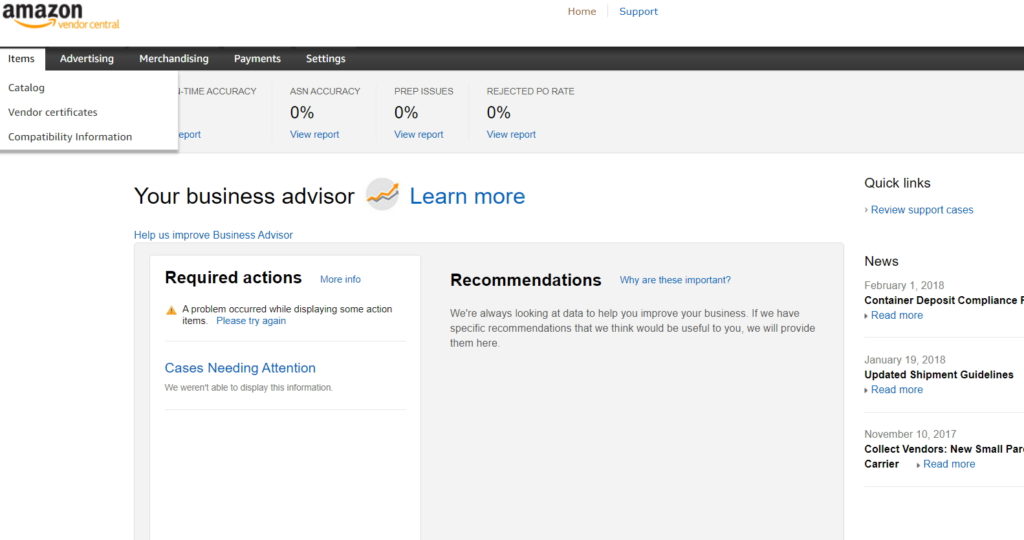
Second, Vendor Central will order huge amounts of inventory in small periods of times and then go weeks or months without ordering again. If you're used to a more consistent ordering trajectory this can really wreak havoc on your inventory ordering projections. Larger companies used to dealing with large retailers might not have an issue dealing with such issues but for smaller companies it can be very difficult to adjust to.
Finally, you may also be allured to Vendor Central with the attraction of finally having a real live account rep in America. Unfortunately this won't be the case. After a few weeks, the buyer you were first speaking to will start to ignore all your emails and you'll be forced to open Vendor Central support tickets with Indian tech support the same way you do with Seller Central support.
Vendor Central: The Positives
So far I have painted Vendor Central as all doom and gloom but there are in fact some positives to Vendor Central:
- No sales tax nexus created in states
- Access to marketing/advertising not available to Seller Central clients
- Hedge your account risk
- You can still sell via Amazon FBA
- Quick and reliable payment
The greatest benefit of Vendor Central is arguably the fact that you do not create sales tax nexus in the dozens of states that Amazon FBA can give you nexus in. In the past many have simply ignored this sales tax nexus but states are become increasingly more aggressive in at least considering ecommerce sellers as evidenced by Massachusetts' recent demand for Amazon to give over the information of sellers that have stored goods in their states since 2016. Even still, many sellers may prefer to keep their heads in the sales tax sand but for larger brands this is a risk they can't take. If your only option is between Merchant Fulfilled and Vendor Central (and not FBA) then Vendor Central may be a good option for you.
Vendor Central also gives you access to certain advertising and marketing initiatives that aren't available to other sellers. In the past this used to be a lot more valuable than it is now as only Vendor Central clients could access A+ content, Amazon AMS, and on page video. Now nearly everyone can access these mediums (more credence given to the idea that Amazon views third party sellers at least as favorably as first party sellers). Still, certain elements like full category sponsorship are only available to Vendor Central clients although these marketing initiatives are expensive (often in the five figures).
Vendor Central also helps you mitigate your business against account suspension. In most cases, if your Vendor Central account gets suspended your Seller Central account is not affected and vice versa. This gives your business some protection against an absolute single point of failure. It's also worth noting here that selling on Vendor Central does not preclude you from selling the exact same products via FBA but your Seller Central pricing must match the suggested retail prices you provide to Vendor Central.
Finally, Amazon is actually a very good vendor to deal with for the most part compared to many other large retailers. In a nutshell this means they pay reliably and on time which is something that cannot be said for many big box retailers.
Who Should Use Vendor Central and Who Shouldn't?
In my opinion, if you're currently selling on Amazon FBA and you have no sales nexus concerns, you should not use Vendor Central. You may consider accepting a Vendor Central invitation and only send in a very small portion of your catalog just in case your circumstances ever do change and you do want to use Vendor Central. You'll likely have your Vendor Central buyer pressuring you to send your entire catalog in but you can simply ignore these requests.
On the other hand, if you're a large brand with sales nexus concerns then Vendor Central may be your only option to get exposure on Amazon. While Vendor Central has few benefits over Amazon FBA it does have significant benefits over being a Seller Central Merchant Fulfilled seller.
Negotiation Strategies and Tips
- Don't give your entire catalog at once
- Negotiate your co-op fees lower in the beginning
- Refuse to agree to increases in co-op and damage allowances when they are imposed
- Set your product costs high
- Join the Vendor Central Linked In group
The biggest advice I can give you is to not give your entire catalog to Vendor Central if you do decide to try the platform. You will lose control of your product pages and very likely your profit margin will take a hit. If your profit margins do take a hit (perhaps even going into negative territory) it's better if this only affects some of your products and not your entire business.
When you're first invited into Vendor Central try to negotiate your co-op fee as low as possible. Your buyer will likely try to start you at 10% but try to negotiate down to 8%.
When you do get hit with increases in your fees after a year or so be very firm in refusing to the increases. You may have to agree to some small token increases to freight allowances and/or damage allowances but do not agree to everything. Make sure you have the margins to support these increases though.
When you submit your costs to Amazon in the beginning be very aggressive with setting these as high as possible, perhaps only a 10% discount off your retail price. If Amazon does not like your costs they will tell you. It is very difficult to raise costs to Amazon in the future (cost increases have to be manually approved). In summary, you want to be as aggressive with pricing in your first year as possible.
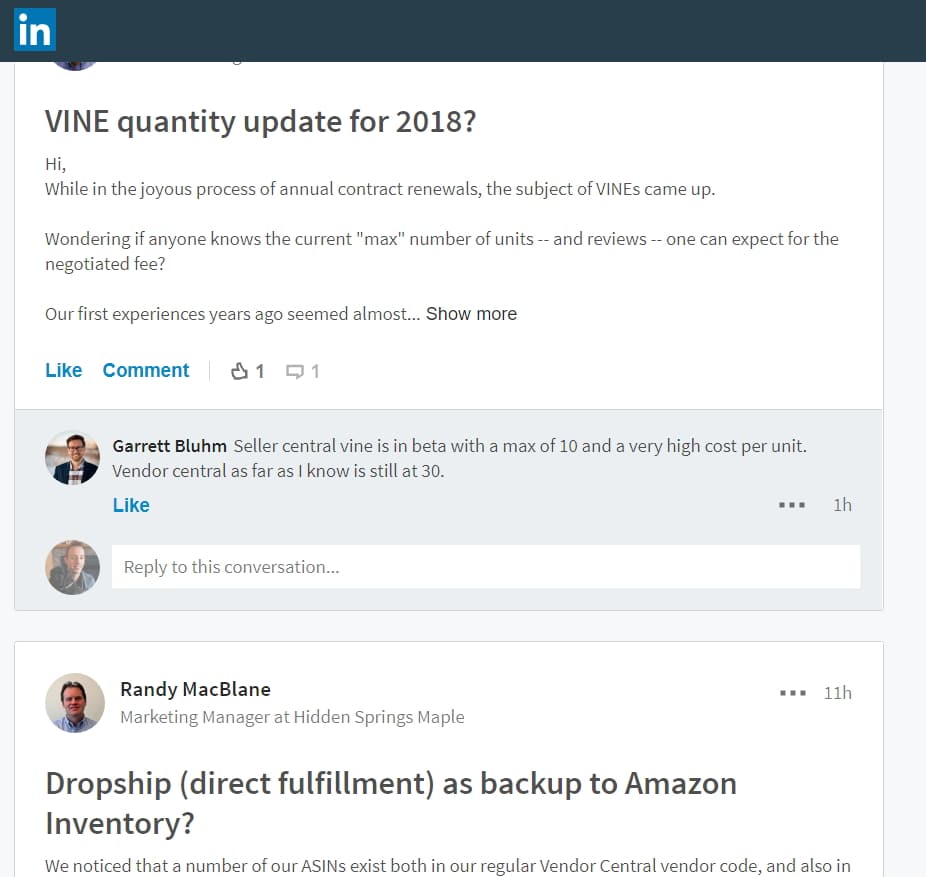
Finally join the Linked In Amazon Vendor Central (AVC) group. It's an incredible source of knowledge and you can get a lot of help from other vendors. They can also perhaps give a different perspective than mine.
Conclusion (and My Company's Vendor Central Story)
My previous company first got invited to Vendor Central in late 2013. I was very excited to get the invitation, especially after speaking to our buyer on the phone and he promised the great things to come.
In 2014 after our first full year on Vendor Central, a review of our P&L reveal that our overall Amazon sales had grown very strongly. There was one giant problem: the company's overall profit was much lower. It wasn't until revealing a full year's P&L that I determined where the lost profit had gone: Vendor Central fees and the reduced product margins that went with it. My company was the proverbial frog having the heat slowly turned up on it. 2014 was basically a lost year for my business. None of this was necessarily Amazon's fault but rather I was a small company not used to wholesaling to a large retailer. Unfortunately, I've spoken to countless other businesses who have had the same experience.
Deciding to join Vendor Central or not will likely be one of the most significant business decisions you make for your business, especially if it's largely dependent on Amazon. Hopefully this article gives some insight into the platform and helps you to make a more educated decision about joining the platform or not. If you have any questions, comments, or experiences (if you're a past/current Vendor Central client) please share them below.
